How-to Article ...by Bernard Wiek
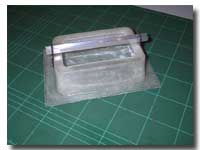
Learn how to make your own custom radio box...
Click here for the German translation of this article!
Klicken Sie hier fr die deutsche bersetzung dieses Artikels!
Before starting to laminate an RC-box we have to find a suitable and appropriate mould. A plastic box will be appropriate. This time we used a box of take-out Chinese food. The advantage of this material (polypropylene) is 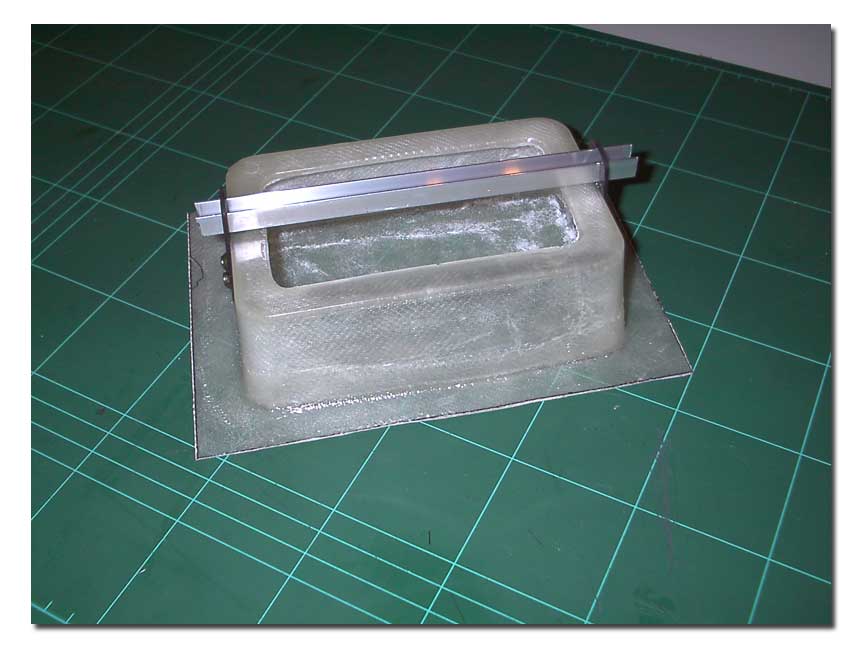 that epoxy does not stick on it. When you choose to use a material to which epoxy sticks you have the use release wax.
that epoxy does not stick on it. When you choose to use a material to which epoxy sticks you have the use release wax.
It is important to note that we build the box from the outside to the inside, so the first layer you will lay-up against the inside of the mold will be your outer layer of the final RC box.
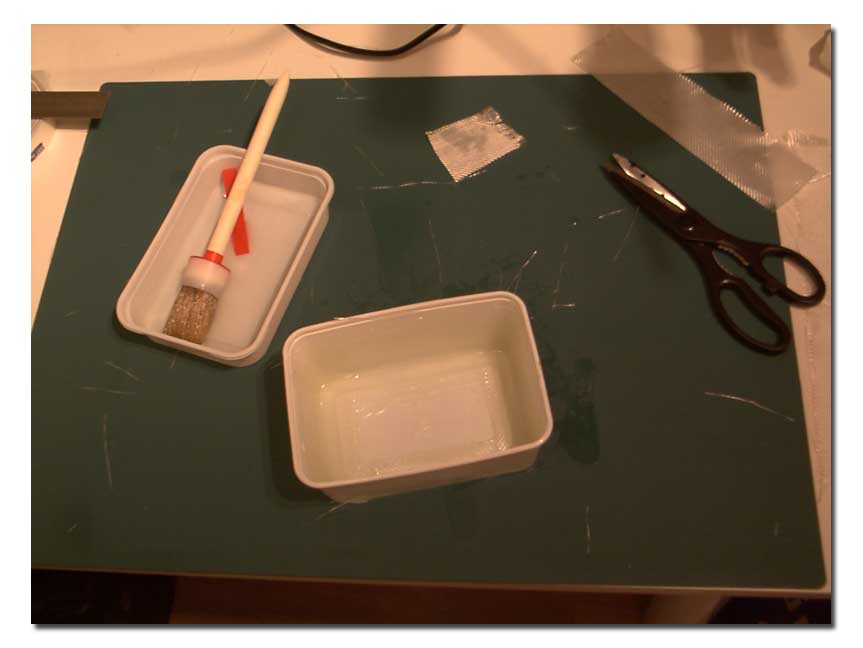 The sides of the RC-box are built out of strips. This way we get less folds and air bubbles. We cut the strips from roving woven glass matt about two inches in width. The length of the strips depends on the length and the width of
The sides of the RC-box are built out of strips. This way we get less folds and air bubbles. We cut the strips from roving woven glass matt about two inches in width. The length of the strips depends on the length and the width of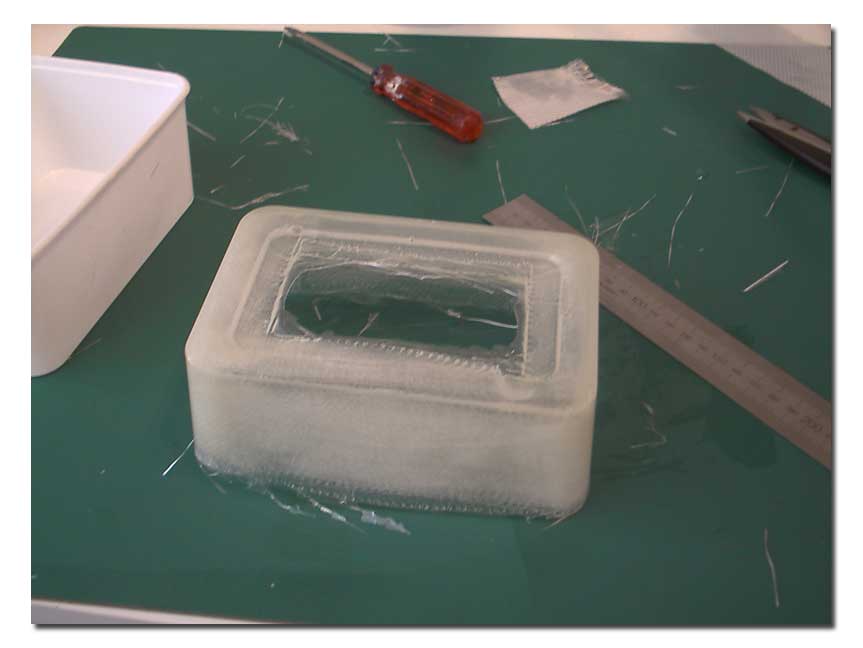 the mold. You need a 2 inch overlay. To decide how many strips you need you have to count on a minimal side thickness of four layers. Of course you can us more layers which will affect the weight of the RC-box, but also the rigidity.
the mold. You need a 2 inch overlay. To decide how many strips you need you have to count on a minimal side thickness of four layers. Of course you can us more layers which will affect the weight of the RC-box, but also the rigidity.
We start laminating with a length strip, which we will place half on the bottom and half on the side. After that we will place a width strip on the same way and work our way around the mold. The second layer strips are placed about halfway over the first layer. This way we place all the strips to reach the right side thickness and height. Be sure to use enough epoxy and make sure you lose the air bubbles in the material. Air bubbles weaken the material and may cause leakage.
Leave the project for about 48 hours to dry, look for the correct time for the hardening time of your epoxy. When the epoxy is hardened, you can detach the mold from your project. If you have air bubbles on the bottom of the box of the mold, you will have holes on the top of the box. These holes can be closed by injecting epoxy in the holes and leaving the box in the mold to dry again.
 Now we are ready to finish the RC-box, to place it on the bottom plate. We have to measure the correct height and shorten it in when necessary. Make sure to cut it very straight.
Now we are ready to finish the RC-box, to place it on the bottom plate. We have to measure the correct height and shorten it in when necessary. Make sure to cut it very straight.
Now we will make the bottom. Take a flat plate, for example a plate of glass. Grease the plate with release wax. Now cut four pieces of roving woven glass matt. They have to be as long and as wide as the bottom of the box plus an overlay of 2 inches on each side. These pieces can be helpful to assembling the box. You need also new strips to put on both sides of the box, to fix the box to the plate and also make it watertight.
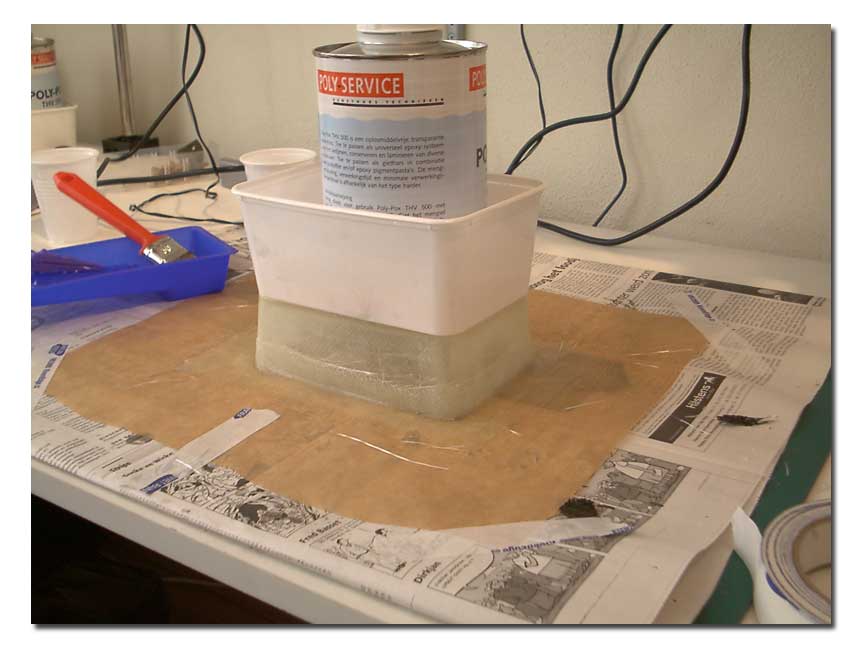
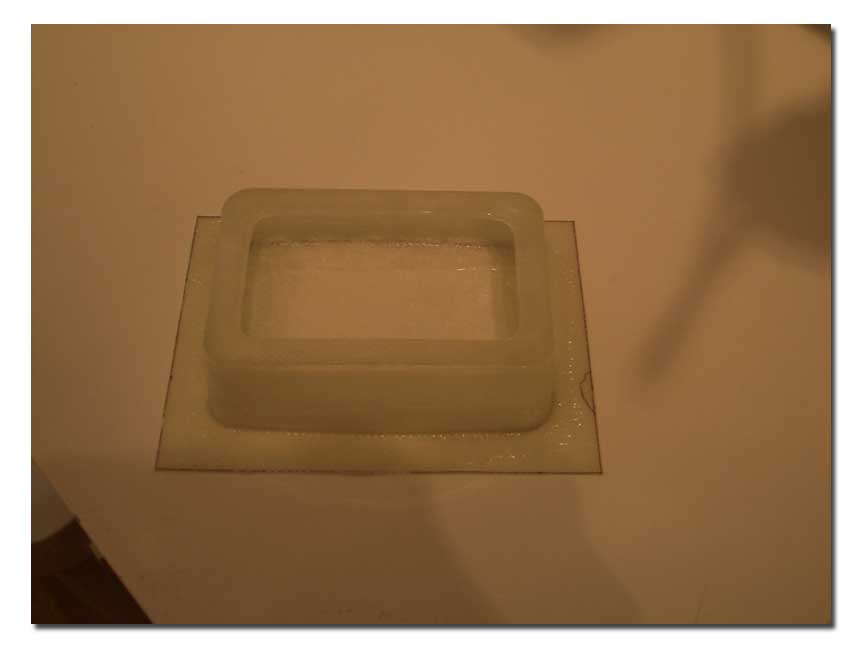
Laminate the four pieces roving on the plate of glass or as I did on some baking paper. Prevent developing air bubbles in the material. Put the box up side down. Laminate the stripes on the inside and take care of a smooth and good overlay. Put some weight on the box to prevent sliding and to be pushed to the bottom thoroughly. To finish you have to laminate the strips on the outside, take care of a good overlay. The combination needs to dry again.
Put some weight on the box to prevent sliding and to be pushed to the bottom thoroughly. To finish you have to laminate the strips on the outside, take care of a good overlay. The combination needs to dry again.
When everything is dry you have your basic RC-box. Now you only have to remove the parts you don’t need. Make everything smooth with sandpaper especially the top of the box.
Now we have to make a lid for the box. In this case we used a carbon plate with a thickness of 0,2 inches (3 or 4 mm). You can also use plexiglass. Cut it out so that is will fit on top of the RC-box.
 How to make the closing system First we make to mounts, they are also made from carbon plate, but you can also use alloy or an epoxy plate. The mounts are made to hold the alloy bar that push the lid on the seal, therefore we need a strong material and a good mounting at the box. After we glue the mounts on the box we drill two holes in each mount and fix them with screws. These screws are also glued to make it watertight. We have to put a seal on top of the RC-box, we make a seal from silicone, rubber or closed cell foam band.
How to make the closing system First we make to mounts, they are also made from carbon plate, but you can also use alloy or an epoxy plate. The mounts are made to hold the alloy bar that push the lid on the seal, therefore we need a strong material and a good mounting at the box. After we glue the mounts on the box we drill two holes in each mount and fix them with screws. These screws are also glued to make it watertight. We have to put a seal on top of the RC-box, we make a seal from silicone, rubber or closed cell foam band.
The alloy bar we used is a U-profile that we cut a bit longer than the length of the box about an inch. To get the right pressure on the lid we placed the lid on the seal and push it hard. Now you can measure the space needed for the alloy bar through the mounts, grind the ends of the alloy bar until it fits. To loose the alloy bar push on the lid and slide the bar too one side out of the mount. Now you can pull it out the other mount and now you can take the lid off the RC-box.
Used material:
From the polyservice (www.polyservice.nl)
- Hardener LH-520
- Epoxy resin THV 500
- 160 gram/square meter roving woven glass matt
- Release wax - Plastic mold (the Chinese take a way box)
- Glass plate - Baking paper
- Alloy bar U-profile
- Mounts made of carbon plate can also be alloy
- The lid is made of carbon plate can also be plexiglass
Probable West Systems has the same products (www.westsystem.com)
Thanks to members of the Xtreme RC Boats Club


